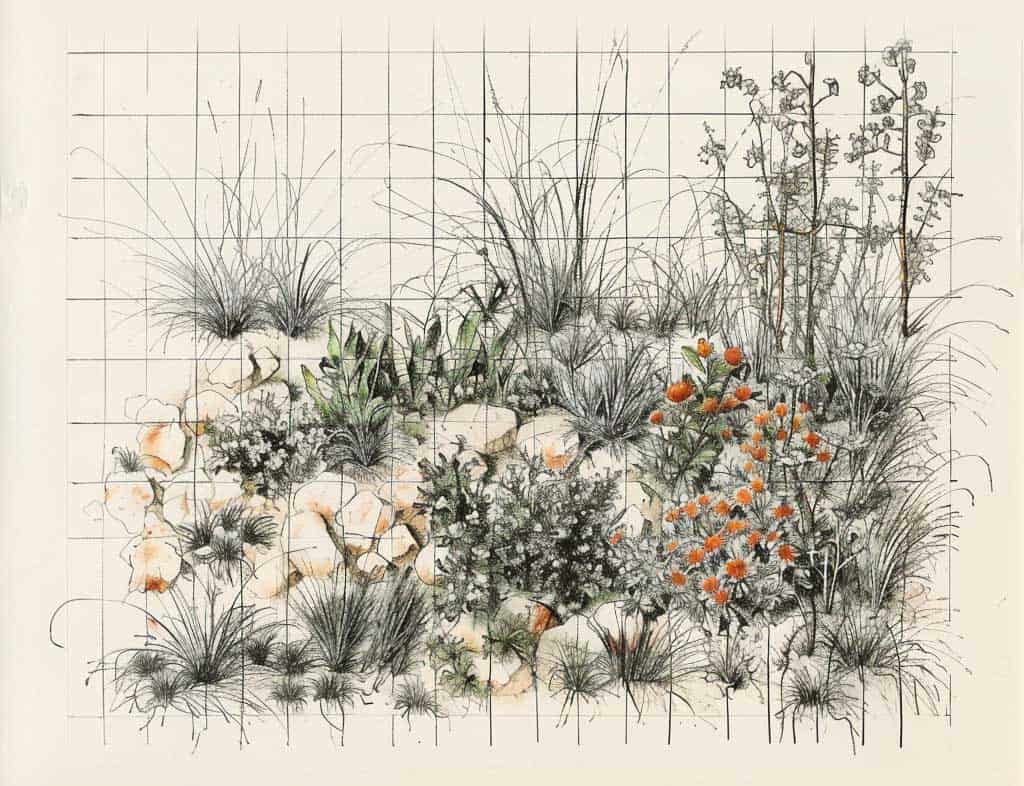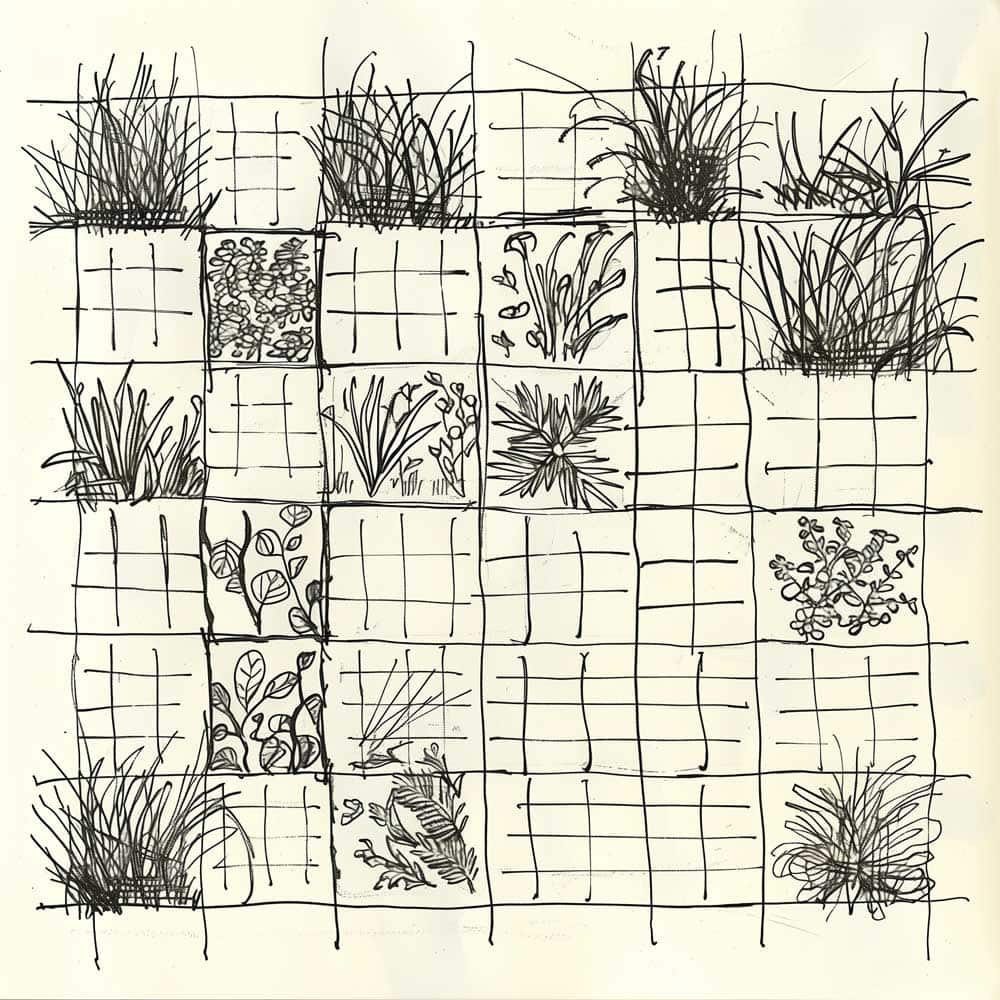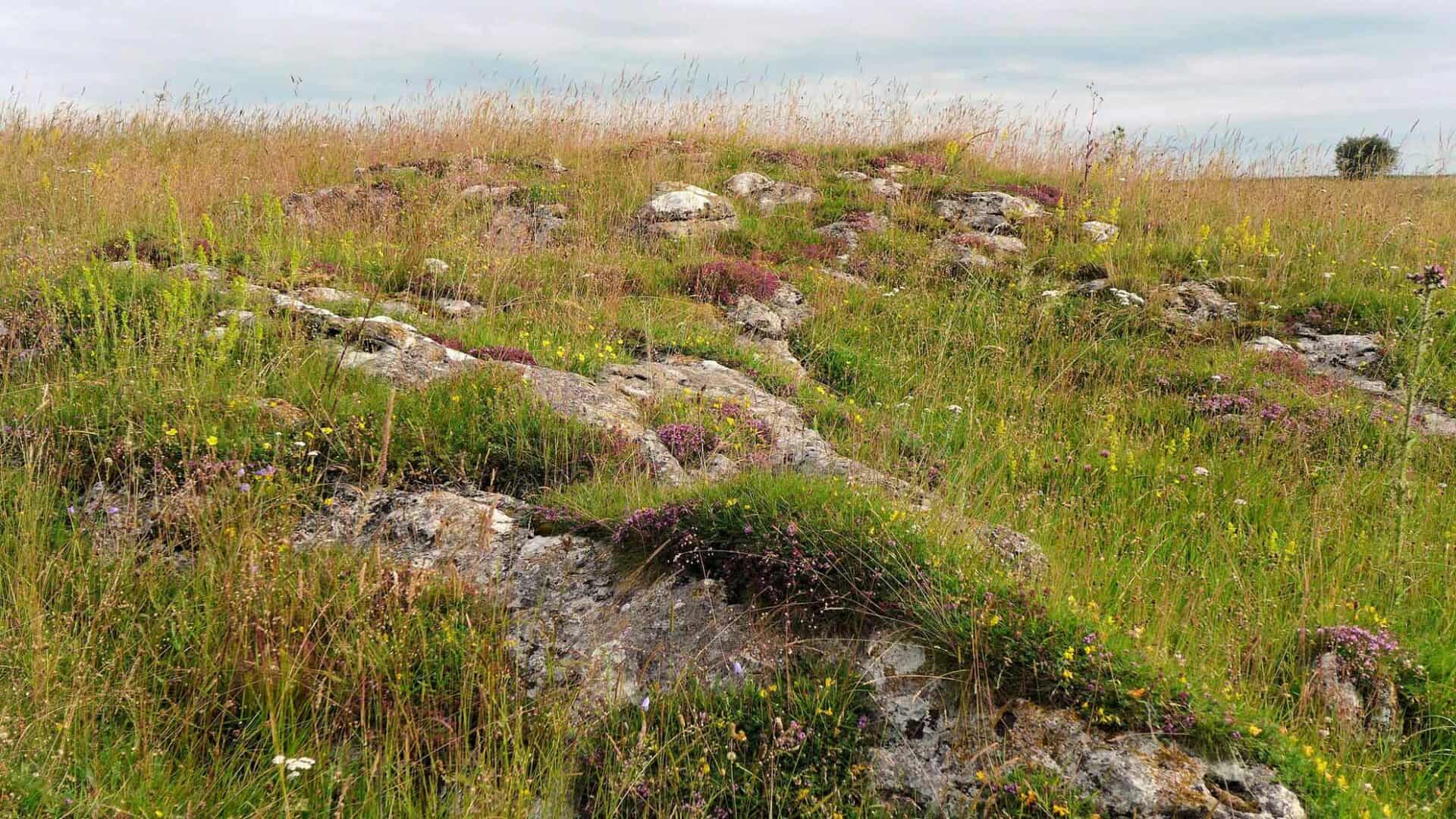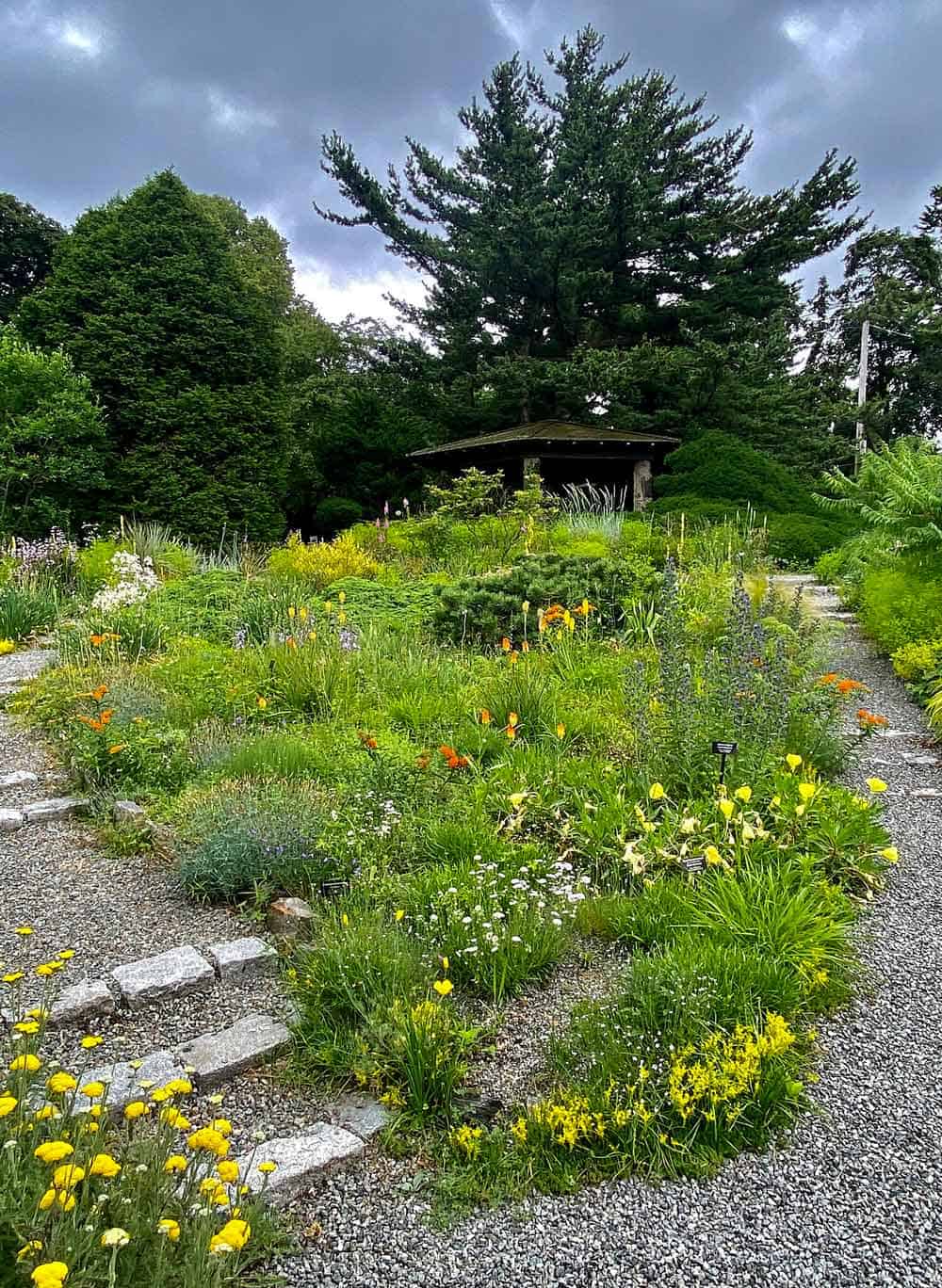What Is Matrix Planting?
Matrix planting is a gardening technique that uses a dominant species or a few species to form a base or ‘matrix’ into which other plants are interwoven. This method is inspired by natural prairie ecosystems, where plant communities grow densely, each occupying a niche but collectively covering every square inch of soil, reducing weed competition, and providing habitat for wildlife.

Designing Your Matrix Planting Plan
When thinking of overall garden layout, plan for plants to be arranged in an irregular, interspersed pattern rather than in straight rows. This creates niches for different species and prevents any one plant from dominating.
Start by create a rough layout mapping the placements and overlapping layers in your newly designed space. You can do this on any kind of simple graph paper that allows you to place plants according to scale, and that helps you think in terms of growth and shape characteristics. You might also want to incorporate new or existing elements like paths, water sources, or trellises. Again, simple sketching graph paper is a great starting point.

Incorporating plants according to their mature sizes and aesthetic contributions ensures that the garden will remain balanced and beautiful throughout the year. Grouping plants in odd numbers and considering their textures, colors, and forms enhances visual appeal.
How to Plan a Matrix Garden
The first step is a thorough analysis of the site’s conditions—light, soil type, moisture, and existing vegetation. Also thinking about existing plants, microclimates (such as heavily shaded areas), water sources, slopes, and drainage is helpful.
Second, decide which plants to include based on needs, functions, and compatibilities. Ideally you want a variety of plant species with different heights, root depths, nutrient needs, and growth habits. This creates a polyculture that leverages beneficial interactions between plants. If you are starting from scratch, with a clear area, you can be very specific in your choices. But if you are working around existing plants, you might be limited to a few choices.

Your key decision early on is to choose the plants that will make up your matrix. Famed Dutch garden designer Piet Uodolf was one of the first to popularize the use of grasses to create a matrix for his garden designs, and he interspersed “drifts” of flowering plants to add visual interest. Many landscape designers have copied his techniques, and in fact natural landscapes that are mostly untouched will have what appears to be a design using the same concepts. So perennial grasses, both short and tall, like little bluestem and prairie dropseed, are a great first choice if your landscape conditions allow it.
Alternatives include living mulches of sedges (Pennsylvania sedge or Carex pensylvanica for example) and other groundcovers, including vining species like wild strawberry (Fragaria virginiana), and short woody groundcovers like Bearberry (Arctostaphylos alpina) or Bush cinquefoil (Potentilla fruticosa). A native plant nursery, county extension office, or landscape pro will also be able to provide specific recommendations for your landscape conditions.

The ideal native groundcovers are spreading, fairly low-maintenance plants that can coexist with taller vegetation and fill in spaces. Many provide season-long cover, flowers, fruits or fixate nitrogen. Using regional natives helps create a sustainable ecosystem.
You next want to think about structural layers in your garden. One of the simplest choices you can make to increase habitat in your garden design is to include plants of a variety of heights, shapes, and blooming seasons. So a logical next step is to decide where your taller plants, including trees or taller shrubs, are placed.
Lastly, think about which plants want to fill in your middle layers, which normally would include things like flowering perennials, biannuals and annuals, herbacious and woody shrubs, and other accent plants.
Remember that the same basic pattern applies whether you are creating a 10′ by 10′ matrix garden or covering half an acre. The approach utilizes layers and diversity of plant species to create a self-sustaining ecosystem, with benefits extending beyond the aesthetic to significantly support local wildlife and biodiversity.

What Are the Advantages of Using a Planting Matrix?
The idea behind matrix planting is to create a self-sustaining, low-maintenance ecosystem that provides habitat, reduces pest and disease issues, conserves water and nutrients, and increases yield through synergistic plant relationships. It’s a way of gardening modeled after natural, biodiverse plant communities.
With plants occupying multiple vertical layers and niches, matrix gardens maximize use of light, nutrients, water and space. Different rooting depths prevent competition.
The diversity of plants in a matrix also breaks up insect and disease pest cycles. Attracting predator insects also provides biological pest control.
And well-designed matrix gardens are largely self-sustaining and low-input once established, minimizing labor needs for weeding, watering, fertilizing. The intermingled patterns and succession of plants provide ongoing color, texture and visual interest throughout the seasons.
